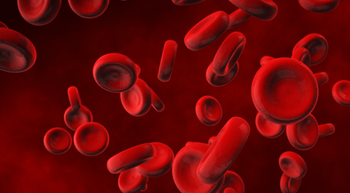
- December 2010
- Volume 4
- Issue 6
Oncology Community Facing Severe Drug Shortages
Hospitals, pharmacists, and physicians across the United States are reporting shortages of critical anticancer drugs, including carboplatin, cisplatin, dacarbazine, fludarabine, and cytarabine.
Hospitals, pharmacists, and physicians across the United States are reporting shortages of critical anticancer drugs. The FDA Website confirms that growing demand and manufacturing problems have resulted in an insufficient supply of common chemotherapy agents, including carboplatin, cisplatin, dacarbazine, fludarabine, and cytarabine.
The American Society of Clinical Oncology (ASCO) recently warned that the “oncology community is experiencing severe and worsening shortages of many critical therapies.” According to ASCO, doxorubicin, leucovorin, etoposide, nitrogen mustard, and vincristine are also in short supply. In a statement, ASCO president-elect Michael P. Link, MD, a pediatric oncologist, said these shortages have caused treatment delays for patients and hampered drug development research. Supplies of drugs used to mitigate treatment-related adverse effects or cancer pain are also insufficient to meet demand. The American Society of Health System Pharmacists (ASHP) added several supportive care agents to its drug shortage list in November, such as epoetin alfa, granisetron hydrochloride
injection, propofal, and morphine. To address the growing concern about the widespread drug shortages, which extend well beyond oncology, ASCO, ASHP, the American Society of Anesthesiologists, and the Institute for Safe Medication Practice (ISMP) convened a Drug Shortages Summit in early November. They invited representatives of health professional organizations, along with pharmaceutical manufacturers and suppliers, to discuss the issue. Recommendations that emerged from the summit include having the pharmaceutical supply chain notify providers sooner of impending shortages; giving drug manufacturers and the FDA more leeway in finding ways to deal with a drug shortage, such as extending a drug’s expiration date; and updating the definition of a “medically necessary” therapeutic, triggering more rapid
reporting of an impending shortage to the FDA. Most of the shortages are for drugs that are no longer patent protected.In published statements and interviews, representatives from the FDA have ascribed the lack of profitability for these generic drugs as the underlying cause of the shortages. Valerie Jensen, an associate director with the FDA’s drug shortage program, told MSNBC in October that manufacturing problems account for 40% of the shortages, 20% are due to production delays, and 20% have occurred because a manufacturer has stopped making the drug.
Articles in this issue
almost 15 years ago
Net Guides: Melanomaalmost 15 years ago
Net Guides: Bone Metastasesalmost 15 years ago
Yoga for Cancer Carealmost 15 years ago
FDA Updatesalmost 15 years ago
The Future of Nursingalmost 15 years ago
Net Guides: Liver Canceralmost 15 years ago
Net Guides: Carcinoma of Unknown Primary Orginalmost 15 years ago
Tools to Help Patients Navigate Their Treatment Pathalmost 15 years ago
John Theurer Cancer Center Opens New Comprehensive Facilityalmost 15 years ago
Bone Loss Drugs Increase Stroke Risk in Patients With CancerNewsletter
Knowledge is power. Don’t miss the most recent breakthroughs in cancer care.






























































































